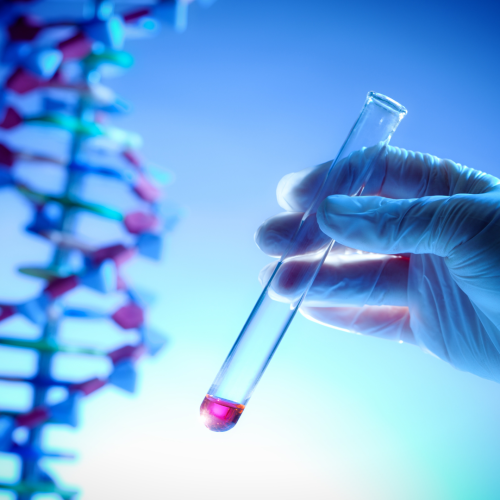Labrador Retrievers are beloved for their friendly nature, intelligence, and loyalty. However, like many other large dog breeds, they are prone to specific bone problems that can affect their overall health and mobility. As a responsible pet owner, understanding these issues is crucial to ensuring your furry friend’s well-being. This guide will provide an in-depth look at the various bone problems Labradors may face, their causes, symptoms, and available treatments.
The Importance of Understanding Bone Health
Bone health is a critical aspect of a Labrador’s overall well-being. Labradors, known for their energetic and active nature, require robust and healthy bones to support their lifestyle. Without proper bone health, they are susceptible to ailments significantly affecting their quality of life. This guide provides a comprehensive overview of common bone problems in Labradors, helping pet owners identify, treat, and prevent these issues.
Common Bone Problems in Labradors
Labradors are prone to several bone-related conditions, ranging from mild discomfort to severe mobility issues. The most common bone problems include:
Hip Dysplasia: A genetic condition where the hip joint is malformed, leading to arthritis and pain over time.
Elbow Dysplasia: A similar condition to hip dysplasia but occurs in the elbow joints, causing lameness and discomfort.
Osteochondritis Dissecans (OCD): A disease that affects the cartilage and bones in the joints, leading to pain and lameness.
Panosteitis: An inflammation of the long bones in the legs, often causing sudden lameness.
Arthritis: A degenerative joint disease that causes joint pain and stiffness.
Causes of Bone Problems
The causes of bone problems in Labradors can be broadly categorized into genetic, environmental, and nutritional factors.
Genetic Factors: Many bone problems, such as hip and elbow dysplasia, are inherited. Breeding practices play a significant role in the prevalence of these conditions.
Environmental Factors: The environment in which a Labrador lives can impact its bone health. Overexertion, improper exercise, and injuries can contribute to bone problems.
Nutritional Factors: Diet plays a crucial role in bone health. Nutritional deficiencies or imbalances can weaken bones and joints, making them more susceptible to disease.
Symptoms to Watch For
Recognizing the symptoms of bone problems early can help in seeking timely treatment. Some common symptoms include:
Lameness: A noticeable limp or favoring one leg can indicate a bone problem.
Difficulty Standing Up: Struggling to rise from a lying position may suggest joint issues.
Reluctance to Exercise: A usually active dog showing reluctance to move or play might be experiencing pain.
Visible Deformities: Swelling or unusual shapes in the limbs can be a sign of bone disease.
Diagnosing Bone Problems
Diagnosing bone problems in Labradors involves a combination of veterinary examinations and diagnostic tests.
Veterinary Examinations: A thorough physical examination by a vet can reveal signs of bone problems.
Imaging Techniques: X-rays, CT scans, and MRIs can provide detailed images of bones and joints, helping to diagnose.
Genetic Testing: For inherited conditions, genetic tests can determine the risk of developing certain bone diseases.
Hip Dysplasia in Labradors
Understanding Hip Dysplasia: Hip dysplasia is a genetic condition where the hip joint does not fit properly into the hip socket. This misalignment results in the femoral head and hip socket rubbing against each other, leading to joint damage and arthritis over time. Labradors are particularly susceptible to this condition, which can cause significant discomfort and mobility issues. Symptoms often include difficulty rising, reluctance to engage in physical activities, and noticeable limping or lameness.
Diagnosis typically involves a veterinarian conducting a physical examination and taking X-rays to assess the extent of the misalignment and joint damage. Treatment options vary based on the severity of the condition, ranging from weight management, physical therapy, and anti-inflammatory medications to more invasive procedures like hip replacement surgery. Early detection and proactive management are crucial in minimizing pain and improving the quality of life for dogs with hip dysplasia.
Symptoms: Symptoms include lameness, difficulty rising, reluctance to run or jump, and pain during movement.
Diagnosis: Diagnosis involves physical examination, X-rays, and sometimes genetic testing.
Treatment Options: Treatment can range from weight management and physical therapy to surgical interventions like hip replacement.
Elbow Dysplasia in Labradors
Understanding Elbow Dysplasia: Elbow dysplasia involves multiple developmental abnormalities in the elbow joint, leading to arthritis and lameness. In Labradors, this condition is characterized by improper growth and development of the elbow’s components, such as the bones and cartilage. These abnormalities cause joint instability, resulting in painful friction and eventual degeneration. Symptoms of elbow dysplasia include lameness in the front legs, reluctance to play or exercise, and visible discomfort when moving.
Over time, affected dogs may develop arthritis, further exacerbating pain and mobility issues. Diagnosis typically involves a veterinarian conducting a physical examination and using imaging techniques like X-rays to assess the joint’s condition. Treatment options depend on the severity of the dysplasia and may include weight management, anti-inflammatory medications, physical therapy, and, in severe cases, surgery to correct the joint abnormalities. Early intervention is crucial in managing symptoms and improving the quality of life for dogs with elbow dysplasia.
Symptoms: Common symptoms are lameness in the front legs, swelling around the elbow, and reduced range of motion.
Diagnosis: Diagnosis is made through physical exams and imaging techniques like X-rays.
Treatment Options: Treatments include weight management, anti-inflammatory medications, and surgery.
Osteochondritis Dissecans (OCD)
Understanding OCD: Osteochondritis dissecans (OCD) is a condition where the cartilage in the joints becomes damaged, causing pain and lameness. In Labradors, this typically occurs in the shoulder, elbow, or knee joints. The disease develops when the cartilage cushions the joints and fails to properly attach to the underlying bone, creating cracks or loose fragments. These loose pieces can cause inflammation and interfere with joint movement, leading to significant discomfort and limping.
Common symptoms of OCD include joint swelling, reduced activity, and a noticeable reluctance to bear weight on the affected limb. Diagnosis involves a veterinarian conducting a physical examination and using imaging techniques such as X-rays or MRI to identify cartilage damage. Treatment options range from rest and anti-inflammatory medications to surgical intervention to remove or reattach the loose cartilage fragments. Early detection and treatment are essential to prevent long-term joint damage and maintain the dog’s mobility and comfort.
Symptoms: Symptoms include joint swelling, lameness, and reduced activity levels.
Diagnosis: Diagnosis involves imaging techniques to detect lesions in the cartilage.
Treatment Options: Treatment can include rest, anti-inflammatory medications, and surgery to remove or repair damaged cartilage.
Panosteitis in Labradors
Understanding Panosteitis: Panosteitis is an inflammatory condition affecting the long bones, primarily seen in young, growing dogs like Labradors. It involves the inflammation of the bone’s outer layer, leading to sudden and shifting lameness, often referred to as “growing pains.” This condition typically affects the humerus, radius, ulna, femur, and tibia. Symptoms include acute lameness, which may shift from one leg to another, pain upon palpation of the affected bone, lethargy, and a reduced appetite.
The exact cause of panosteitis is unknown, but it is believed to be related to genetic factors, rapid growth, and possibly viral infections. Diagnosis is usually made through physical examination and X-rays, which show increased bone density in the affected areas. Treatment focuses on managing pain and inflammation with medications, rest, and supportive care. Fortunately, panosteitis is usually self-limiting, with most dogs outgrowing the condition by 18-24 months.
Symptoms: Symptoms are characterized by sudden lameness, pain upon palpation of the long bones, and intermittent symptoms that can shift from one leg to another.
Diagnosis: Diagnosis involves physical examination and X-rays to identify inflammation in the bones.
Treatment Options: Treatment typically includes pain management, anti-inflammatory medications, and rest.
Arthritis in Labradors
Understanding Arthritis: Arthritis is a common condition in older Labradors, characterized by the gradual degeneration of joint cartilage. This deterioration reduces the cartilage’s ability to cushion the joints, leading to bone-on-bone contact, which causes pain, inflammation, and stiffness. Symptoms often include difficulty rising, reluctance to climb stairs or exercise, visible lameness, and reduced mobility. Arthritis can affect any joint, but it is most frequently seen in the hips, knees, and elbows.
Diagnosis typically involves a veterinarian conducting a physical examination, reviewing the dog’s medical history, and using imaging techniques such as X-rays to assess joint health. While arthritis is a progressive and incurable condition, management strategies can significantly improve a dog’s quality of life. These include weight management, anti-inflammatory medications, joint supplements, physical therapy, and, in some cases, surgical interventions. Regular veterinary check-ups and a tailored treatment plan are crucial for managing arthritis in older Labradors.
Symptoms: Symptoms include stiffness, lameness, reluctance to move, and visible discomfort during or after exercise.
Diagnosis: Diagnosis is based on physical exams, imaging techniques, and sometimes blood tests to rule out other conditions.
Treatment Options: Treatments include weight management, pain relief medications, joint supplements, and in severe cases, surgery.
Preventing Bone Problems
Prevention is always better than cure, and there are several steps pet owners can take to minimize the risk of bone problems in Labradors.
Genetic Screening: Breeding practices should incorporate genetic screening to minimize the occurrence of inherited bone conditions. Breeders can identify and avoid mating dogs that carry these traits by testing breeding dogs for genetic markers associated with conditions like hip and elbow dysplasia. This proactive approach helps reduce the likelihood of passing these hereditary issues to offspring, promoting healthier future generations of Labradors. Responsible breeding practices, combined with genetic screening, play a crucial role in enhancing the overall health and longevity of the breed, ensuring that fewer dogs suffer from debilitating bone problems.
Proper Nutrition: A balanced diet with adequate calcium, phosphorus, and other essential nutrients is crucial for bone health. Calcium and phosphorus are vital for developing and maintaining strong bones and teeth. Other nutrients, such as vitamin D, help absorb calcium, while protein supports overall growth and repair. Ensuring your Labrador receives these nutrients in appropriate amounts can prevent bone disorders and support healthy skeletal development. A well-balanced diet tailored to your dog’s age, size, and activity level is essential for maintaining optimal bone health and preventing osteoporosis and fractures.
Exercise Regimens: Regular, moderate exercise is beneficial for maintaining bone and joint health in dogs. It promotes strength and flexibility, which are crucial for overall well-being. However, being cautious with young puppies is vital as their bones are still growing and developing. Overexertion can lead to strains, injuries, or developmental issues later in life. Gradual, supervised exercise appropriate for their age and breed helps ensure healthy skeletal development without causing harm. Consulting a veterinarian for tailored exercise recommendations is advisable to support optimal bone and joint health throughout a dog’s life.
Managing Bone Problems
Effective management can improve the quality of life of Labradors diagnosed with bone problems.
Medical Management: Medications for pain and inflammation are commonly prescribed to manage various conditions. Regular check-ups are crucial to assess the effectiveness of the treatment, monitor any side effects, and adjust the medication as needed. These appointments also allow healthcare providers to evaluate the overall progress of the condition and make necessary recommendations for further management or adjustments in medication dosage. Monitoring ensures that the patient receives optimal care, manages symptoms effectively, and maintains overall health and well-being. It’s an essential part of comprehensive treatment to ensure the best possible outcome for patients dealing with pain and inflammation.
Surgical Options: In severe instances, surgical intervention becomes essential to correct bone deformities or replace damaged joints. Surgery aims to restore normal function and alleviate pain that cannot be managed through conservative treatments alone. Procedures range from corrective surgeries for bone abnormalities to joint replacement surgeries, which involve replacing damaged joints with artificial implants. Such interventions are carefully considered after thoroughly evaluating the condition’s severity and the patient’s overall health. Post-operative care and rehabilitation are crucial for recovery, ensuring patients regain mobility and quality of life. Consulting with specialists helps determine the most appropriate surgical approach tailored to each case.
Rehabilitation: Physical therapy, hydrotherapy, and rehabilitative exercises are vital in enhancing mobility and alleviating pain. These therapies are tailored to individual needs, aiming to strengthen muscles, improve flexibility, and promote joint mobility. Hydrotherapy utilizes water’s buoyancy to reduce stress on joints while facilitating movement. Physical therapy sessions include targeted exercises to restore function and reduce discomfort caused by various conditions, injuries, or surgeries. By focusing on personalized rehabilitation plans, these therapies aim to optimize recovery, enhance overall physical condition, and improve quality of life. Regular sessions under professional guidance ensure safe and effective progress toward improved mobility and pain management.
Role of Diet in Bone Health
Diet plays a significant role in maintaining healthy bones.
Nutritional Requirements: A diet rich in essential nutrients such as calcium, phosphorus, vitamin D, and omega-3 fatty acids is crucial for overall health. Calcium and phosphorus support strong bones and teeth, while vitamin D aids their absorption. Omega-3 fatty acids contribute to joint health and reduce inflammation. Including these nutrients in the diet through dairy products, leafy greens, fish, and fortified foods helps maintain bone density, support muscle function, and promote overall well-being. A balanced intake ensures proper growth and development, prevents bone disorders like osteoporosis, and supports the body’s ability to repair and maintain tissues effectively.
Supplements: Joint supplements like glucosamine and chondroitin are famous for supporting joint health. Glucosamine helps maintain cartilage health by supporting its structure and function, while chondroitin contributes to cartilage elasticity and shock-absorbing properties. These supplements often alleviate symptoms of osteoarthritis and other joint conditions by promoting joint lubrication and reducing inflammation. While their effectiveness varies among individuals, they are considered safe and can complement other treatments like exercise and medication. Consultation with a healthcare provider is advisable to determine the right supplement and dosage based on specific needs and health conditions.
Foods to Avoid: Avoid feeding foods that contribute to obesity, as excess weight can worsen bone problems. Obesity puts added stress on bones and joints, increasing the risk of conditions like osteoarthritis and fractures. Feeding a balanced diet that meets nutritional needs without excess calories helps maintain a healthy weight and supports bone health. Limiting treats and high-calorie foods while ensuring regular exercise appropriate for your pet’s age and breed promotes overall well-being and reduces the likelihood of weight-related complications. Consulting with a veterinarian for dietary recommendations tailored to your pet’s health can help prevent obesity-related issues and support long-term bone health.
Exercise and Bone Health
Proper exercise is crucial for maintaining strong bones and joints.
Appropriate Exercise: Activities such as swimming and walking are ideal for preserving joint health in dogs without causing undue strain. Swimming provides a low-impact exercise that strengthens muscles and improves cardiovascular fitness while minimizing joint stress. Walking, when done at a moderate pace, helps maintain mobility, flexibility, and overall fitness without overexertion. These activities are particularly beneficial for older dogs or those with arthritis, as they promote circulation and lubrication of joints without exacerbating discomfort. Incorporating these exercises into a routine helps dogs stay active and healthy and enjoy improved joint function over time.
Avoiding Overexertion: Intense activities that excessively strain joints should be limited, especially in young dogs whose bones and joints are still developing. Overdoing activities like jumping, running on hard surfaces, or rigorous play can stress growing joints, leading to potential injuries or long-term joint problems. It’s crucial to provide balanced exercise appropriate for their age and breed, focusing on activities that promote muscle development and coordination without putting undue pressure on immature joints. Monitoring their activity levels and consulting with a veterinarian ensures young dogs can grow strong and healthy without compromising their joint health in the future.
Exercises to Strengthen Bones: Controlled activities that promote muscle strength around the joints are crucial in supporting bone health. These exercises include controlled walking, gentle running, and specific strength-training routines tailored to the dog’s capabilities. Strengthening muscles around the joints, these activities help stabilize and protect the bones from injury and degeneration. Regular, moderate exercise encourages bone density and overall musculoskeletal fitness, contributing to better mobility and reducing the risk of joint-related issues such as arthritis. It’s essential to vary intensity based on the dog’s age, health, and breed, ensuring a balanced approach that supports long-term bone and joint health.
Genetic Testing for Bone Disorders
Genetic testing can be a valuable tool for identifying the risk of bone disorders.
Benefits of Genetic Testing: Early identification of genetic predispositions enables proactive management and informed breeding decisions. Genetic testing and screening can identify potential health risks and inherited conditions in dogs. This information helps breeders make educated choices to avoid passing on genetic disorders to future generations. Proactive management includes selecting breeding pairs with complementary genetic profiles to minimize the likelihood of offspring inheriting detrimental traits. Additionally, early detection allows for early intervention and tailored care plans to mitigate genetic predispositions’ impact, promoting healthier and longer lives for dogs while preserving breed standards and genetic diversity within populations.
How It Works: Genetic testing involves analyzing a dog’s DNA to identify markers associated with specific bone conditions. By examining genetic markers, such as mutations or gene variations that affect bone health, veterinarians and breeders can assess the risk of developing conditions like hip dysplasia or osteochondritis dissecans. This information aids in early detection and allows for proactive measures to manage and potentially mitigate the impact of these conditions. Genetic testing helps inform breeding decisions by identifying carriers of genetic traits, ensuring responsible breeding practices aimed at reducing the incidence of inherited bone disorders in future generations of dogs.
When to Consider It: Genetic testing is recommended for dogs involved in breeding programs or with a history of bone problems in their lineage. By analyzing DNA, genetic tests can identify potential carriers of genetic mutations associated with bone conditions like hip dysplasia or osteochondritis dissecans. This information helps breeders make informed decisions to avoid passing on these disorders to offspring. Testing also aids in selecting breeding pairs with compatible genetic profiles, reducing the risk of inherited diseases. Genetic testing provides valuable insights for dogs with a familial history of bone issues that enable proactive management and preventive measures, ensuring healthier future generations.
Alternative Therapies
Alternative therapies can complement traditional treatments for bone problems.
Physical Therapy: Targeted exercises can help improve mobility and reduce pain.
Hydrotherapy: Water-based exercises provide low-impact resistance training, which benefits joint health.
Acupuncture: Acupuncture can help manage pain and improve overall well-being.
Importance of Regular Check-ups
Regular veterinary check-ups are essential for early detection and management of bone problems.
Frequency of Check-ups: Annual check-ups are recommended, with more frequent visits if your Labrador is at risk or already diagnosed with a bone condition.
What to Expect: During a check-up, the vet will perform a physical examination, discuss any symptoms, and recommend further diagnostic tests.
Benefits of Early Detection: Early detection allows for prompt treatment, which can slow the progression of the disease and improve the dog’s quality of life.
Living with a Labrador with Bone Problems
Caring for a Labrador with bone problems requires adjustments to ensure their comfort and quality of life.
Adjustments at Home: Providing orthopedic beds, ramps, and non-slip surfaces can help improve mobility and reduce discomfort.
Mobility Aids: Devices like harnesses, braces, and wheelchairs can assist with mobility.
Ensuring Quality of Life: Ensuring your dog has a pain-free and fulfilling life includes regular vet visits, proper management of their condition, and plenty of love and attention.
Bone Problems in Labradors
Bone problems in Labradors can be challenging, but with the right knowledge and proactive care, you can help your furry friend live a happy and healthy life. From understanding the causes and symptoms to exploring treatment options and preventive measures, being informed is the first step in providing the best care for your Labrador.
Conclusion
Bone problems in Labradors require careful attention and management. Understanding the common issues, recognizing symptoms early, and seeking timely veterinary care can help ensure your Labrador enjoys a healthy and active life. Preventive measures, proper diet, regular exercise, and routine check-ups are essential in maintaining your Labrador’s bone health. With the proper care and knowledge, you can provide the best possible support for your beloved pet.
FAQs
What are the common signs of bone problems in Labradors?
Common signs include lameness, difficulty standing up, reluctance to exercise, and visible limb deformities.
Can bone problems in Labradors be prevented?
While genetic predispositions can’t be entirely prevented, proper nutrition, regular exercise, and genetic screening can reduce the risk.
What is the best diet for a Labrador with bone problems?
A diet rich in essential nutrients like calcium, phosphorus, omega-3 fatty acids, and joint supplements is recommended.
How often should I take my Labrador to the vet for check-ups?
Annual check-ups are recommended, with more frequent visits if your dog has or is at risk for bone problems.
Are there non-surgical treatments for bone problems in Labradors?
Yes, non-surgical treatments include medications for pain and inflammation, physical therapy, hydrotherapy, and acupuncture.
What should I do if I suspect my Labrador has a bone problem?
Schedule a visit to the veterinarian for a thorough examination and appropriate diagnostic tests.









